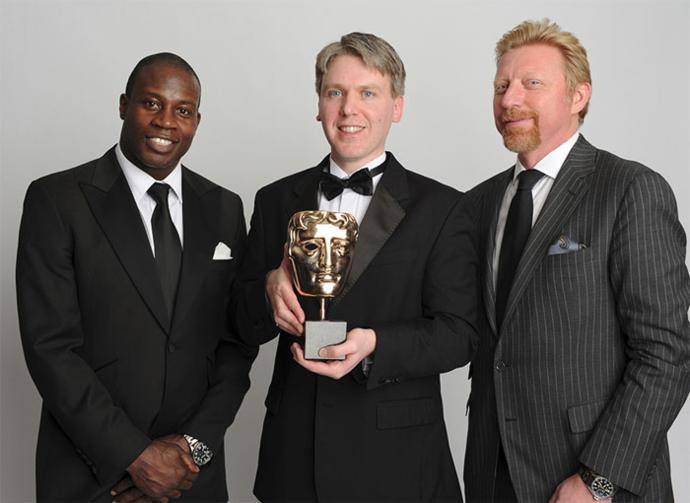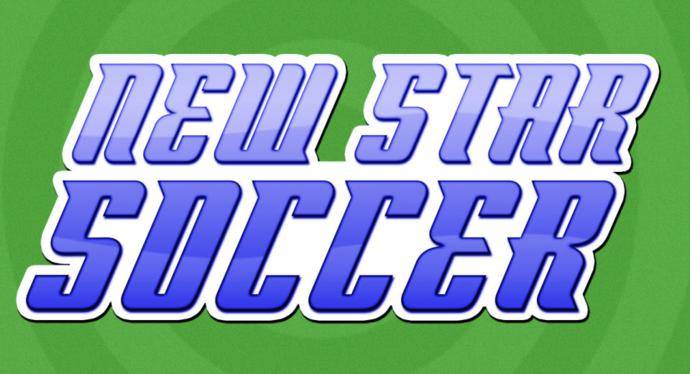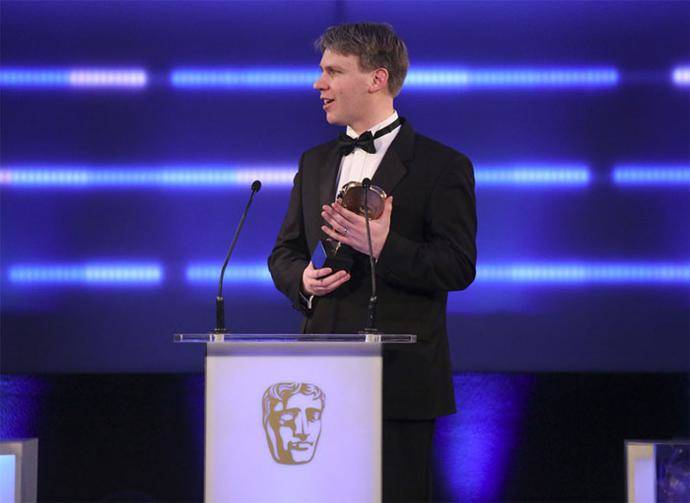The Mobile Movement: How The Indie Revolution is Changing the Industry



- 1
- 2
- 3
At some point over the last six or seven years, the gaming world completely changed. The omnipotent power of the big publishers started to wane and, thanks to more open platforms like Steam, Android and the App Store on iDevices, smaller developers could release a game and have it sell hundreds of thousands, if not millions of copies. Perhaps the biggest indicator of this shift in recent weeks was at the BAFTAs. Indie games took home almost every single prize, the most surprising of which was when industry mega-sellers like Forza and FIFA lost out in the sports section to New Star Soccer.
At a time when many core games are looking for a different sort of experience, there are people in the industry trying to fill that niche. What will it mean in the long run? How are things going to change? We thought we’d try to answer these questions, and we invited the BAFTA-winning creator of New Star Soccer, Simon Read, to give us his thoughts as well.
A Whole New Industry
As games got more popular in the nineties, the companies that had been around the longest began to have more power. The likes of EA could afford to put out several games a year, and a single failure wasn’t going to shut down the company (although money for marketing reduced the risk of failure, anyway). Developers or hobbyists without a big publisher behind them would often be relegated to the far corners of the internet, working on shareware for distribution through BBS. Later, sites like Downloads.com would offer a platform for new developers to release their games, although often the prices were too high and the games too broken to have any real value.
It’s into this world that the first New Star Soccer was born. Available to try for five matches (at which point you’d need to shell out $5 to continue your career) and at the ridiculous size (by today’s standards) of a little over a megabyte, the original game had many of the features of the iOS title that would win Simon his BAFTA almost ten years later. New Star Soccer seems to have been fairly successful, and a dedicated fan base would continue to support him through each new iteration.
Then the way the industry worked began to change.
“I didn’t see the shift coming,” Simon told us, “but it was clear that something interesting was happening when titles like Braid and World of Goo became huge hits. To be honest it felt a world away from my reality as an indie dev who was just getting by each month.”
Braid was certainly a huge success. It would go on to sell hundreds of thousands of copies across several platforms, and is often the first game people name when talking of indie or “artsy” games. It was so popular that its creator, Jonathan Blow, would be able to spend six years on his follow-up game, and that its world exclusive first-look would take place alongside the announcement of the PlayStation 4.
Thanks to the increasing amount of people with access to mobile phones, gaming was bigger than ever. But these new gamers weren’t buying from EA and Activision; they were buying directly from the developer, and they were willing to spend, spend, spend.
Word of Mouth
“Even in this self-publishing world you have to remember that 90% of indie devs are struggling to pay the bills and we only hear about the success stories.”
Simon had so far managed to stay afloat between the big hitters and the thousands of other one-man developers who didn’t know if they’d be able to afford to create another game once they’d finished their current.
With the success of games like the all-consuming Angry Birds, it’s easy to believe that every indie title makes money, or that it even covers the time spent making it. Simon had found a niche with New Star Soccer, and built upon it with other games and sequels, and that managed to help pay his bills, but others weren’t nearly as lucky.
With current mobile crazes like 4 Pics 1 Word, it’s impossible not to see the value in word of mouth, but not every game could inspire that level of “passing-on.” New Star Soccer, with its almost Football Manager level of addictiveness and surprisingly deep gameplay, has all the ingredients of an iOS hit, but it could have gone either way.
“Word of mouth has certainly been the key to New Star Soccer finding a wider audience. There is an addictive quality about it that is hard to pin-point but makes people want to talk and tweet about the game. When a mate tells you that they are playing a game that is one part Sensible Soccer and one part Championship Manager, and it costs less than a pint, it’s virtually a done deal!”
A Done Deal
For 69p, New Star Soccer is almost guaranteed to provide you with several hours of entertainment. Once you’re through the trial and you’ve become connected to your “life,” it almost feels as if you’ve already had that much money’s worth. The value created by one man is impressive, but it’s also almost impossible to replicate. How can a big publisher compete with the innovation – and low cost – of a game created by a single person or a small team of experts?
They can’t.
But they’re not the only ones struggling to keep up. Simon takes an almost philosophical view of other one-man teams trying to take a slice of the pie.
“Clones of successful game are inevitable when everyone is trying to get in during the gold rush, but it’s sad to see the larger publishers ripping off indie games and adding virtually nothing other than polish.”
Big publishers can use their higher funds and familiar characters to overshadow titles they’ve perhaps been influenced by, often without credit or even recognition of the original game. You can’t own an idea – if there was a motto for the app store, this would perhaps be it. There’s no doubt that big publishers want their piece of the burgeoning mobile market, and they’re willing to use everything in their power to gain control. Will it turn around the indie revolution of the last few years? Despite an increase in AAA titles, Simon still thinks there’s a place for innovation on the app store.
“The great thing about being able to self-publish easily is that the small, independent teams will continue to innovate and find niches whilst the big publishers play catch up.”
Support from the Top
There’s a plus side to big developers wanting a piece of the action. Sony have announced that developers will be able to self-publish onto the PlayStation Store for PS4 and charge what they want. Will this change this yet again?
“More easily accessible platforms are definitely a good thing,” Simon said, when we asked him about the PS4. “The App Store is bulging at the seams and great titles are disappearing without a trace so more platforms will hopefully give everyone a bit more breathing space. Enticing people back to console development might be tricky though.”
Will this convert some of the anti-mobile brigade to smaller indie gaming? I asked if Simon felt there was a way to get the naysayers to at least try games like New Star Soccer.
“I’m not sure there are that many core gamers who refuse to play mobile games. Sure there are some diehards who won’t accept free-to-play games but almost everyone has a smartphone and they are happy to try out mobile games when they have a few minutes to spare. This type of gaming can’t replace the console experience of course, so it is just an additional way of playing for many people.”
If nothing else, it’s easy to see the future is bright for indie developers, and there’s never been more choice in the way they can distribute and market their games. As more big companies want a slice of the pie, there are only going to become more platforms for the kind of risk and innovation that only indie developers can produce.
What’s next for New Star Soccer and Simon Read?
Conclusion
I’m sure Simon is still a little overwhelmed after his BAFTA win, and the next few months will be spent following up on interviews and, of course, making the free update which will bring new drinks and heading to New Star Soccer. Eventually, he’ll get back to doing what he does best: developing top tier indie sports games.
“Working alone forces you to think about every aspect of game development, from programming to marketing to web design. I am definitely a jack-of-all-trades type and that means I can make at least semi-informed decisions in all areas of running a business. It also helps if you have a vision for something you are passionate about when nobody can tell you what to do. Of course that means you make mistakes but you learn more with each new game. I guess the disadvantages are that you can spread yourself too thinly and you lose some of that creativity that others can bring to the table.
“I am currently looking at partnerships that can help take NSS to the next level. I’d like the next version of the game to be more polished and I know that I need help to do that! I’d also like to tackle new sports and there is only so much I can do alone, so I am definitely looking to take advantage of the wealth of talent that is out there.”



 Mat Growcott has been a long-time member of the gaming press. He's written two books and a web series, and doesn't have nearly enough time to play the games he writes about.
Mat Growcott has been a long-time member of the gaming press. He's written two books and a web series, and doesn't have nearly enough time to play the games he writes about.